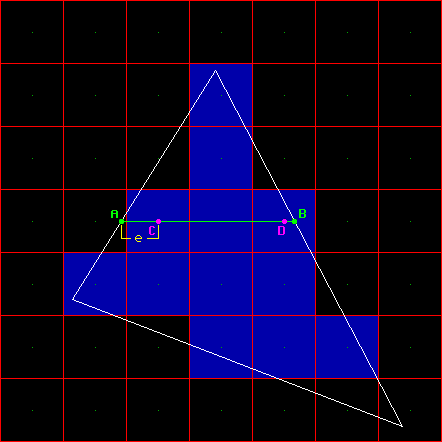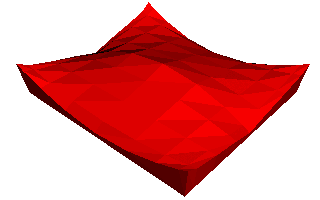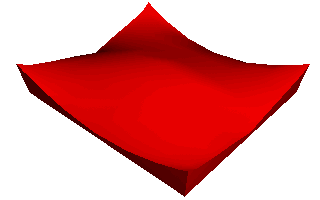Gouraud Shading
Interpolation of the intensity
The Gouraud Shading method applies the illumination model on a subset of surface points and interpolates the intensity of the remaining points on the surface.
In the case of a polygonal mesh the illumination model is usually applied at each vertex and the colors in the triangles interior are linearly interpolateded from these vertex values.
The linear interpolation can be accomplished using the
plane equation method discussed in the lecture on rasterizing polygons.
Notice that facet artifacts are still visible.
Gouraud shading is by no means perfect, but it can make a real difference over flat shaded polygons. Problems with Gouraud shading occur when you try to mix light sourcing calculations with big polygons.
Imagine you have a large polygon, lit by a light near
it's center. The light intensity at each vertex will be quite low, because they
are far from the light. The polygon will be rendered quite dark, but this is
wrong, because it's centre should be brightly lit. You can see this happening
in the game Descent. Firing flares around, especially into corners, causes the
surroundings to light up. But try firing a flare into the middle of a large
flat wall or floor, and you will see that it has very little effect.
However, if you are using a large number of small polygons, with a relatively
distant light source, Gouraud shading can look quite acceptable. Infact, the
smaller the polygons, the closer it comes to Phong shading.
Gouraud Shading: Named after its inventor, Henri Gouraud who developed this technique in 1971 (yes, 1971). It is by far the most common type of shading used in consumer 3D graphics hardware, primarily because of its higher visual quality versus its still-modest computational demands. This technique takes the lighting values at each of a triangle's three vertices, then interpolates those values across the surface of the triangle. Gouraud shading actually first interpolates between vertices and assigns values along triangle edges, then it interpolates across the scan line based on the interpolated edge crossing values. One of the main advantages to Gouraud is that it smoothes out triangle edges on mesh surfaces, giving objects a more realistic appearance. The disadvantage to Gouraud is that its overall effect suffers on lower triangle-count models, because with fewer vertices, shading detail (specifically peaks and valleys in the intensity) is lost. Additionally, Gouraud shading sometimes loses highlight detail, and fails to capture spotlight effects.



